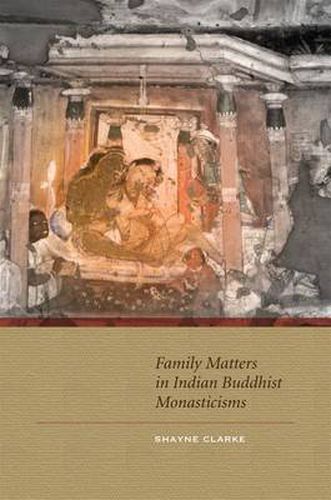Readings Newsletter
Become a Readings Member to make your shopping experience even easier.
Sign in or sign up for free!
You’re not far away from qualifying for FREE standard shipping within Australia
You’ve qualified for FREE standard shipping within Australia
The cart is loading…






Scholarly and popular consensus has painted a picture of Indian Buddhist monasticism in which monks and nuns severed all ties with their families when they left home for the religious life. In this view, monks and nuns remained celibate, and those who faltered in their vows of monastic celibacy were immediately and irrevocably expelled from the Buddhist Order. This romanticized image is based largely on the ascetic rhetoric of texts such as the Rhinoceros Horn Sutra.
Through a study of Indian Buddhist law codes (vinaya), Shayne Clarke dehorns the rhinoceros, revealing that in their own legal narratives, far from renouncing familial ties, Indian Buddhist writers take for granted the fact that monks and nuns would remain in contact with their families. Surveying the still largely uncharted terrain of Indian Buddhist monastic law codes preserved in Sanskrit, Tibetan, and Chinese, Clarke provides a comprehensive, pan-Indian picture of Buddhist monastic attitudes toward family. Whereas scholars have often assumed that monastic Buddhism must be anti-familial, he demonstrates that these assumptions were clearly not shared by the authors/redactors of Indian Buddhist monastic law codes.
Shayne Clarke provides a basis to rethink later forms of Buddhist monasticism such as those found in Central Asia, Ka?m?r, Nepal, and Tibet not in terms of corruption and decline but of continuity and development of a monastic or renunciant ideal that we have yet to understand fully.
$9.00 standard shipping within Australia
FREE standard shipping within Australia for orders over $100.00
Express & International shipping calculated at checkout
Scholarly and popular consensus has painted a picture of Indian Buddhist monasticism in which monks and nuns severed all ties with their families when they left home for the religious life. In this view, monks and nuns remained celibate, and those who faltered in their vows of monastic celibacy were immediately and irrevocably expelled from the Buddhist Order. This romanticized image is based largely on the ascetic rhetoric of texts such as the Rhinoceros Horn Sutra.
Through a study of Indian Buddhist law codes (vinaya), Shayne Clarke dehorns the rhinoceros, revealing that in their own legal narratives, far from renouncing familial ties, Indian Buddhist writers take for granted the fact that monks and nuns would remain in contact with their families. Surveying the still largely uncharted terrain of Indian Buddhist monastic law codes preserved in Sanskrit, Tibetan, and Chinese, Clarke provides a comprehensive, pan-Indian picture of Buddhist monastic attitudes toward family. Whereas scholars have often assumed that monastic Buddhism must be anti-familial, he demonstrates that these assumptions were clearly not shared by the authors/redactors of Indian Buddhist monastic law codes.
Shayne Clarke provides a basis to rethink later forms of Buddhist monasticism such as those found in Central Asia, Ka?m?r, Nepal, and Tibet not in terms of corruption and decline but of continuity and development of a monastic or renunciant ideal that we have yet to understand fully.